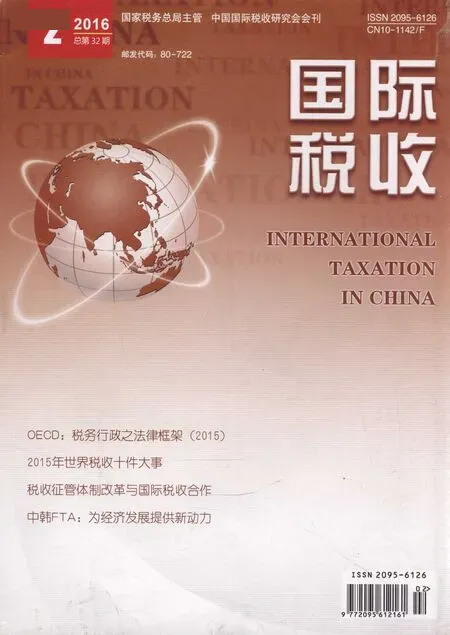The Ministry of Finance, the State Administration of Taxation and the Ministry of Science and Technology Jointly Released a Circular on Improving the Policy of Pre-tax Super-deduction of R & D Expenses(part Ⅱ)
The Ministry of Finance, the State Administration of Taxation and the Ministry of Science and Technology Jointly Released a Circular on Improving the Policy of Pre-tax Super-deduction of R & D Expenses(part Ⅱ)
(continued)
b. For joint R&D activities, the joint parties must determine their respective R&D expenses before applying super-deduction policy.
c. According to the actual situation of business operation and technology development, the actual R&D expenses of an enterprise group on projects with high technique required, larger investment and intensive R&D, can be apportioned between beneficiaries of member enterprises. The apportionment method of R&D expenses shall be determined according to the conformity of rights and obligations and the matching of expenses disbursed and benefits shared. Relevant member enterprise must determine their respective R&D expenses before applying superdeduction policy.
d. Relevant expenses incurred during creative designing activities to acquire the innovative, creative and breakthrough products, can also qualify for pre-tax super-deduction policy stipulated by the Circular.
Creative designing activities are defined as the software development of multimedia and animation game, design and production of digital animation and game, design of housing construction engineering (the evaluation standard for greening building is at three-star level) and specialized landscape architecture engineering; design of industry,multimedia, animation and its derivatives as well as model, etc.
III. Accounting and administration
a. The R&D expenses shall be accounted in accordance with the financial and accounting system. Meanwhile, the qualifying R&D expenses for super-deduction shall be recorded in subsidiary ledgers designated for the R&D projects; the actual amount of each R&D expense that qualifies for super-deduction in the current year must be attributed and calculated accurately. For the multiple R&D activities conducted by an enterprise within a tax year, the qualifying R&D expenses for the super-deduction must be attributed according to different R&D projects.
b. The R&D expenses and business operation expenses of an enterprise shall be calculated respectively, each expense shall be attributed accurately and reasonably. For the unclear division of expenses, it is not possible to qualify for super-deduction.
IV. Non-qualifying industries for super-deduction policy
a. Tobacco manufacturing.
b. Accommodation and catering industry.
c. Wholesaling and retailing.
d. Real estate industry.
e. Leasing and commercial services industry.
f. Entertainment industry.
g. Other industries stipulated by the Ministry of Finance and the State Administration of Taxation.
The aforementioned industries shall be subject to Industrial Classification and Codes for National Economic Activities (GB/4754-2011)and updated accordingly.
V. Administration issues and tax collection requirements
a. The Circular shall apply to the resident enterprise with sound financial accounting, being assessed on an actual profit basis and able to attribute R&D expenses accurately.
b. If the actual amount of R&D expenses by each project is attributed inaccurately or the total amount is calculated inaccurately, the tax authority is authorized to make reasonable adjustments to the pre-tax deduction amount or the super-deduction amount.
c. If the tax authority holds different opinions with the R&D projects qualified for super-deduction incentive, the tax authority may ask for authentication opinions from the competent administrative department of science and technology at the municipal-level or above. The science and technology department shall respond promptly. Enterprises undertaking research projects at the provincial level or above,or the cross-year research projects already identified in previous years, are no longer required to make identification.
d. Enterprises, qualifying for the super-deduction incentive of R&D expenses but failing to enjoy the tax incentive since January 1st, 2016, can apply the incentive retroactively and fulfill the filing requirements. The retrospective application period is limited to a maximum of 3 years.
e. Tax authorities shall strengthen the subsequent management of the super-deduction incentive policy of R&D expenses and carry out the verification regularly. The annual verification scope shall not be less than 20% of the total verification objects.
VI. Effective date
The Circular shall come into force since January 1st, 2016, and simultaneously the Administrative Measures of the Pre-tax Deduction of Enterprise R&D Expenses Issued by the State Administration of Taxation (Guo Shui Fa [2008] No. 116) and the Circular on Relevant Policy Issues concerning the Pre-tax Super-deduction of R&D Expenses Jointly Issued by the Ministry of Finance and the State Administration of Taxation (Cai Shui [2013] No. 70) will cease to apply.
Translator : Ying Zhang
Proofreader : Liping Deng
责任编辑:惠 知

